Disclosure: This article contains affiliate links. We may earn a commission from purchases at no extra cost to you, which helps our travel content.
The first time I laid eyes on the azure domes of the Shrine of Hazrat Ali—known worldwide as the Blue Mosque—I understood why my cinematographer colleagues had spoken of it in reverent whispers. Rising from the dusty plains of northern Afghanistan like a mirage, this architectural masterpiece doesn't just dominate Mazar-i-Sharif's skyline; it commands it with a celestial authority that nearly brought me to my knees. As a filmmaker accustomed to framing the natural world, I found myself humbled by this human creation—a symphony of cobalt tiles, intricate calligraphy, and mathematical precision that defies simple documentation. After spending a week orbiting its perimeter with my camera, studying its relationship with light, and navigating the delicate balance between artistic documentation and cultural reverence, I'm sharing what I've learned about photographing this sacred space with the respect it demands.
Understanding the Sacred Space
Before we discuss apertures and angles, we must acknowledge the profound spiritual significance of the Blue Mosque. Unlike tourist attractions in more frequented destinations, this is first and foremost an active place of worship, believed to house the tomb of Ali ibn Abi Talib, the cousin and son-in-law of Prophet Muhammad.
During my week in Mazar-i-Sharif, I observed how locals approached the shrine—with measured steps, quiet voices, and a palpable reverence that transcended the physical space. As photographers, our primary responsibility is to honor this sanctity.
The mosque complex follows a rhythm dictated by prayer times, with the call to prayer echoing across the city five times daily. These moments transform the atmosphere entirely—what was a contemplative public space becomes an intimate sanctuary. I quickly learned to plan my photography around these sacred intervals, using prayer times for reflection rather than documentation.
Before arriving, I familiarized myself with Islamic customs by reading cultural guide, which proved invaluable for understanding the nuances of respectful behavior. The knowledge gained from this resource helped me navigate complex social situations with confidence and prevented inadvertent offense—something no photograph is worth risking.
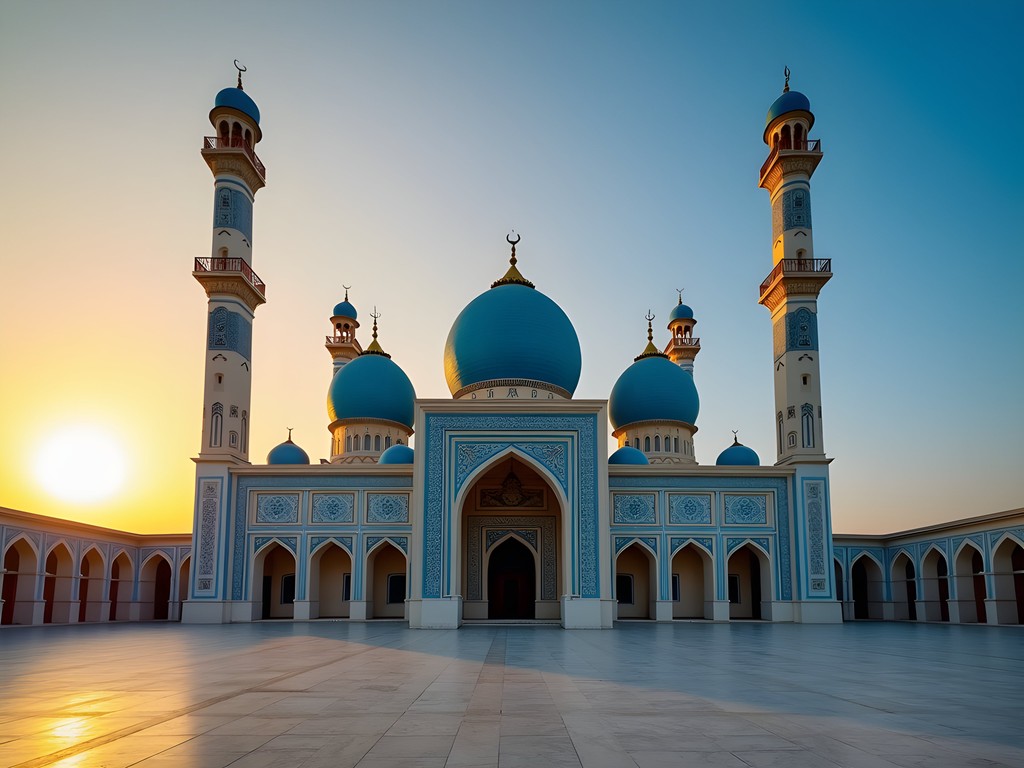
💡 Pro Tips
- Never photograph worshippers without explicit permission
- Learn prayer times in advance and plan shooting schedule accordingly
- Remove shoes before entering any interior spaces
- Dress conservatively—covering shoulders, knees and hair (for women)
Essential Gear for Sacred Architecture Photography
The technical challenges of photographing the Blue Mosque demand thoughtful equipment choices. After years documenting wildlife in variable conditions, I've learned to travel with versatile yet minimal gear—a philosophy that served me well in Afghanistan.
My workhorse for this assignment was my full-frame camera paired with three essential lenses: a 16-35mm wide-angle for capturing the mosque's grand exterior and courtyards, a 24-70mm for versatile compositions, and a 70-200mm for isolating architectural details and distant perspectives. The camera's exceptional dynamic range proved crucial for balancing the bright Afghan sky against shadowed archways.
A sturdy carbon fiber tripod was indispensable for low-light shooting at dawn and dusk—precisely when the mosque reveals its most photogenic qualities. Its compact design made it manageable through crowded spaces while providing the stability needed for crisp architectural shots.
Perhaps counterintuitively for a digital filmmaker, I found myself reaching for my polarizing filter more than any other accessory. It proved invaluable for managing reflections off the glazed tiles and enhancing the already spectacular blue tones that give the mosque its nickname. The filter's ability to deepen the azure hues while maintaining natural skin tones made it essential when including visitors in wider contextual shots.
Finally, never underestimate the importance of spare batteries and memory cards. Power in Mazar-i-Sharif can be unpredictable, and the visual splendor of the Blue Mosque will have you shooting more frames than anticipated.
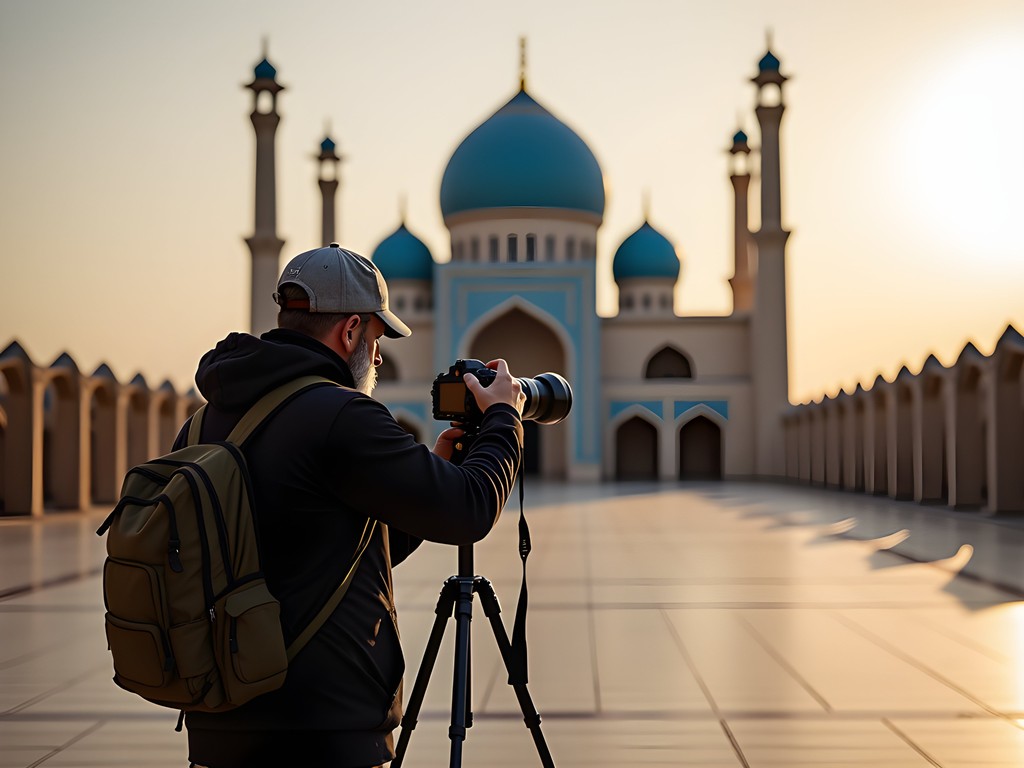
💡 Pro Tips
- Bring a microfiber cloth to protect gear from the fine dust that permeates Mazar-i-Sharif
- A zoom lens is preferable to frequent lens changes which expose your sensor to dust
- Consider a lens hood to manage flare when shooting toward the sun
- Pack a discreet camera bag that doesn't scream 'expensive equipment'
Finding the Perfect Light: Timing Your Visit
If there's one lesson my years of wildlife filmmaking has taught me, it's that light is everything—and nowhere is this truer than at the Blue Mosque. The building's relationship with sunlight is nothing short of alchemical, transforming from spiritual sanctuary to living artwork as the sun traverses the Afghan sky.
Dawn provides the most magical conditions. Arriving before sunrise—around 5:00 AM during my spring visit—I witnessed the mosque emerging from darkness like a celestial vision. As first light kisses the eastern-facing domes, they ignite with an ethereal glow that seems to radiate from within. The courtyard remains blissfully uncrowded at this hour, allowing unobstructed compositions and moments of genuine solitude with this architectural marvel.
Mid-morning brings harsh overhead light that flattens the intricate tilework, making this an ideal time to explore interior spaces or focus on detail shots where you can control your angle relative to the sun. I used this time to photograph the mesmerizing geometric patterns that adorn every surface, creating abstract compositions that capture the mathematical precision of Islamic architectural traditions.
The golden hour before sunset (approximately 5:30-6:30 PM in spring) bathes the western façade in warm amber light, creating a striking contrast with the cool blues of the tiles. This interplay between warm and cool tones produces some of the most cinematic opportunities, particularly when capturing wide establishing shots from across the plaza.
After sunset, during the brief blue hour, the mosque undergoes its final daily transformation as artificial lights gradually illuminate the structure against the deepening indigo sky. A portable LED light helped me subtly fill shadows in foreground elements while maintaining the ambient mood during this challenging lighting transition.

💡 Pro Tips
- Arrive at least 30 minutes before sunrise to secure prime shooting positions
- Mid-day harsh light is ideal for photographing interior details and shadows
- During Ramadan, timing changes significantly—research prayer schedules in advance
- The mosque is often illuminated until about 9 PM, offering night photography opportunities
Composition Strategies: Beyond the Postcard Shot
While the classic frontal view of the Blue Mosque is undeniably striking, my filmmaker's instinct pushed me to search for perspectives that reveal its character beyond the obvious. After all, this isn't merely a building—it's a living, breathing spiritual entity with countless stories embedded in its walls.
My most successful compositions came from embracing asymmetry. Rather than centering the main dome, I often positioned it according to the rule of thirds, allowing the remaining frame to capture the human element—pilgrims approaching, children playing in the courtyard, or the everyday life that unfolds around sacred spaces. These compositions tell a more complete story about the mosque's role in community life.
The mosque's reflecting pools offer compelling opportunities for symmetrical compositions that double the visual impact of the architecture. Early mornings when the water is still provide mirror-like reflections, though you'll need to position yourself low to the ground. My camera strap allowed me to quickly transition between tripod and handheld shooting when navigating these awkward angles.
Don't overlook the power of negative space. Some of my most evocative images incorporated the vast Afghan sky as a dominant element, with the mosque's distinctive silhouette anchoring the lower portion of the frame. This approach conveys the spiritual aspiration of the architecture—reaching toward heaven—while contextualizing it within the expansive landscape.
Framing techniques using the mosque's own architectural elements proved particularly effective. Shooting through arched doorways or using colonnades to create natural frames draws viewers into the space as if they're discovering it themselves. These compositions create depth and invite exploration beyond the two-dimensional image.
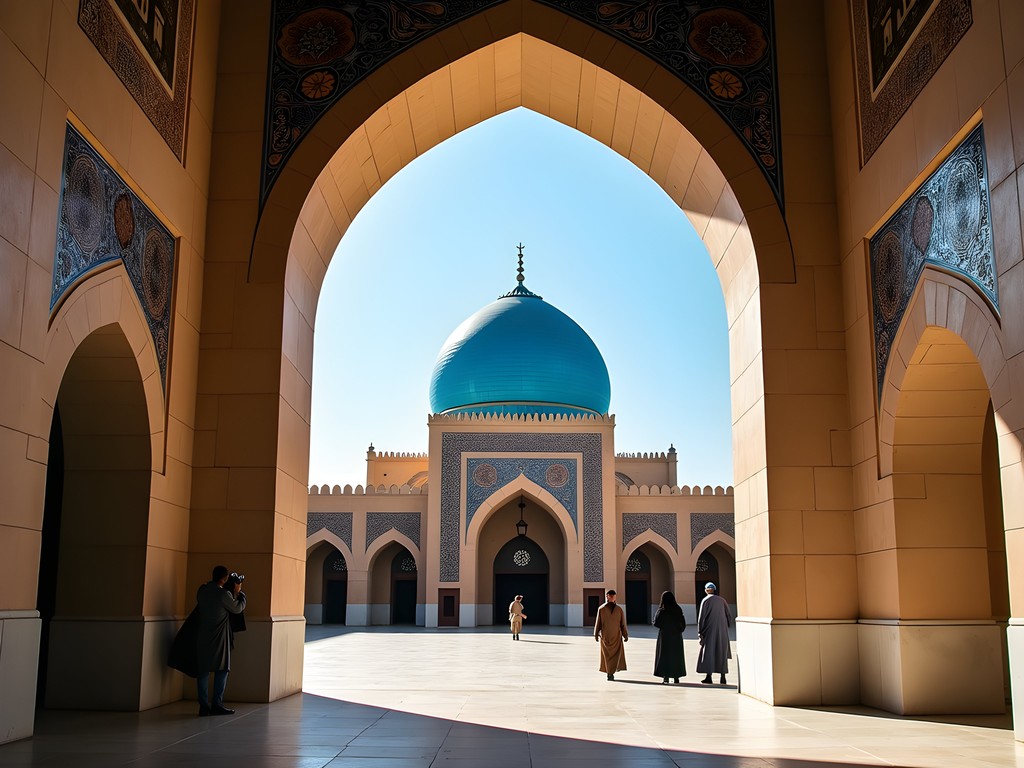
💡 Pro Tips
- Include people for scale—the mosque's grandeur is best understood in relation to human figures
- Look for leading lines in the courtyard's geometric patterns to draw viewers into your composition
- Experiment with vertical compositions to emphasize the soaring minarets
- Use a telephoto lens to compress perspective and create dramatic layering of architectural elements
Navigating Cultural Sensitivities with Grace
Photography in Afghanistan—particularly at religious sites—requires navigating a complex landscape of cultural norms, religious sensitivities, and personal boundaries. My approach was guided by a simple principle: relationship before documentation.
I spent my first day at the Blue Mosque without taking a single photograph. Instead, I observed, engaged with locals when appropriate, and sought to understand the rhythms of the place. This investment paid dividends throughout my stay, as people recognized me as someone who respected their sacred space rather than merely consuming it visually.
When photographing people—whether devotees or casual visitors—I adopted practices that prioritized dignity and agency. Rather than capturing candid shots from a distance (which can feel exploitative), I established connection first. A smile, a nod, or when language permitted, a brief conversation about my project often preceded any photography. This approach not only yielded more authentic portraits but fostered meaningful cultural exchange.
Working with a local guide proved invaluable for navigating nuanced situations. My guide, Fahim, helped negotiate access to certain vantage points, explained appropriate behavior during religious ceremonies, and facilitated conversations with mosque officials. The modest fee for his services was perhaps my most valuable expenditure.
I learned to recognize subtle cues that photography might be unwelcome—a shift in body language, a concerned glance—and always respected these boundaries without question. In several instances, I was asked to delete images that inadvertently captured private moments of worship, which I did immediately and without protest.
Perhaps most importantly, I approached photography at the Blue Mosque as a privilege rather than a right—an opportunity to document extraordinary beauty while honoring the living traditions that created it.
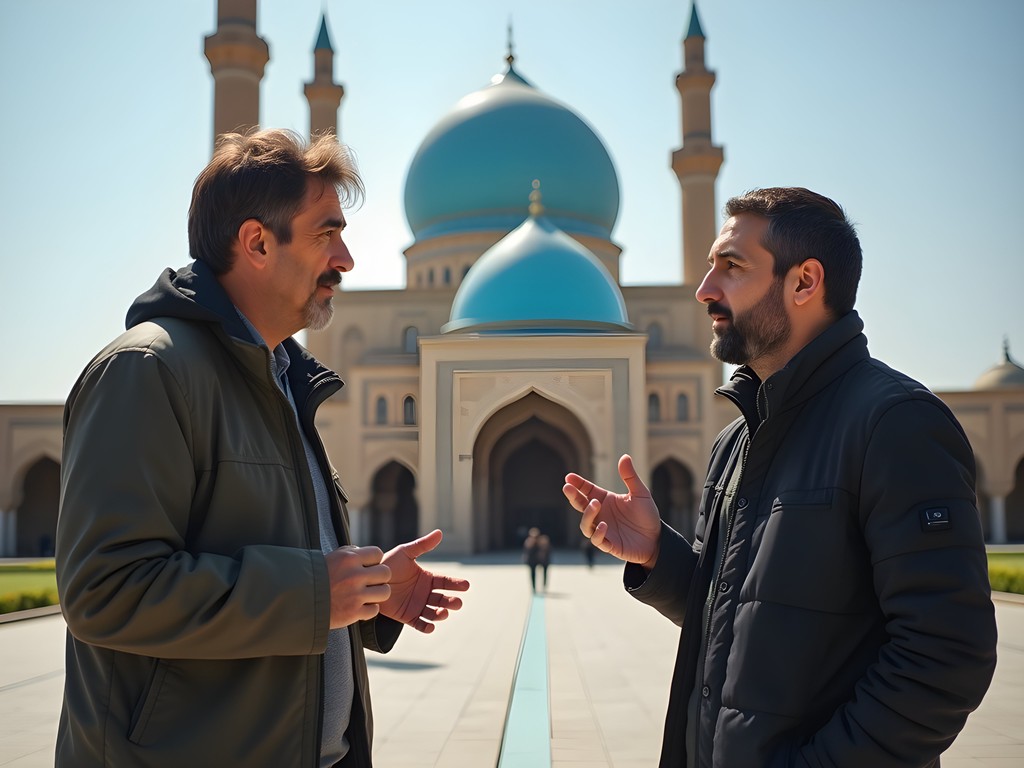
💡 Pro Tips
- Learn basic Dari phrases to establish rapport before photographing people
- Always ask permission before photographing women or children
- Be prepared to put your camera away immediately during call to prayer
- Consider making small donations to the mosque maintenance fund as a gesture of appreciation
Final Thoughts
As I packed away my gear on my final evening in Mazar-i-Sharif, watching the last light fade from the Blue Mosque's domes, I realized that my most valuable images weren't stored on memory cards but etched in my consciousness—moments of connection, reverence, and wonder that transcend mere documentation. The challenge of photographing the Blue Mosque isn't technical but spiritual—finding ways to honor its sanctity while celebrating its beauty. In this delicate balance lies the opportunity to create images that don't merely show what the mosque looks like, but what it feels like to stand in its presence. Whether you're a seasoned photographer or passionate amateur, I encourage you to approach this magnificent structure with both technical preparation and open-hearted respect. The Blue Mosque has stood for centuries and will remain long after our shutters fall silent—we are merely temporary witnesses to its enduring splendor.
✨ Key Takeaways
- Respect always supersedes the perfect shot—when in doubt, ask permission
- Early morning offers the most magical light and fewest crowds
- Look beyond obvious compositions to find perspectives that reveal character and context
- Working with a local guide transforms the experience from documentation to cultural immersion
📋 Practical Information
Best Time to Visit
April-May (spring) when temperatures are mild and flowers bloom in the courtyard
Budget Estimate
$50-75/day excluding accommodation
Recommended Duration
3-4 days minimum to experience different lighting conditions
Difficulty Level
Challenging Due To Cultural Navigation And Security Considerations
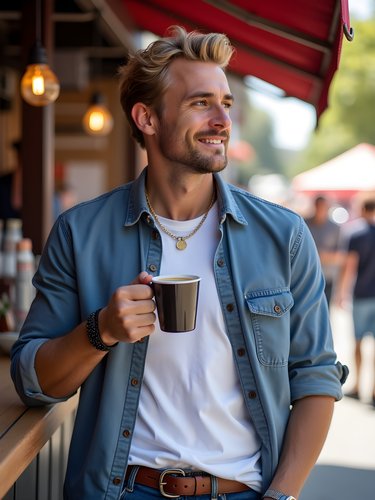
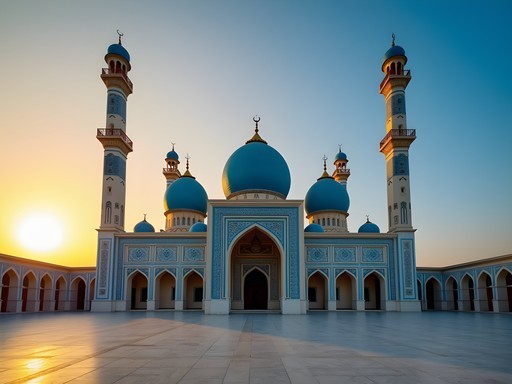
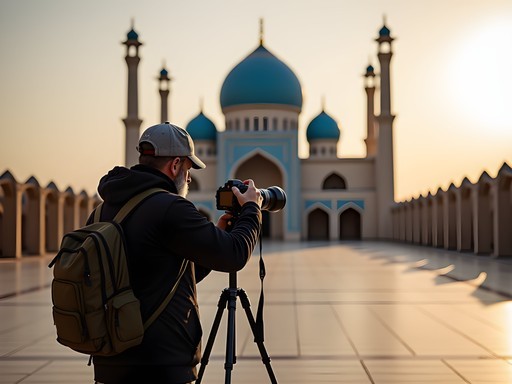
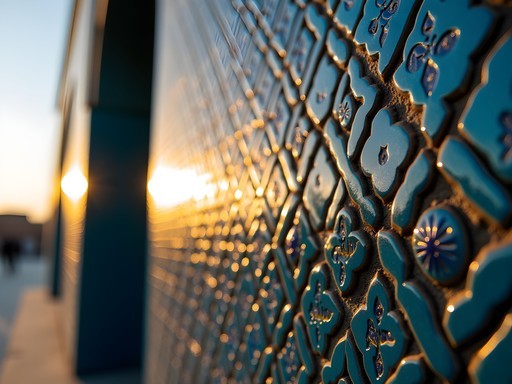
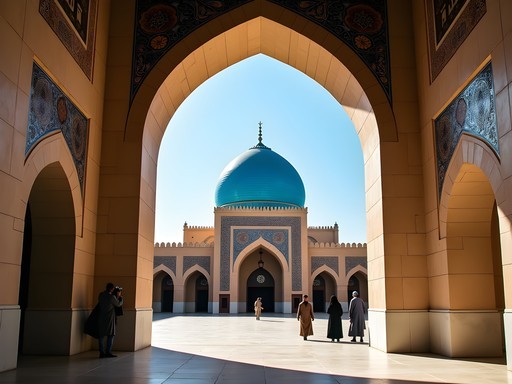











Comments
hikingwalker
Beautiful photos! Did you use a drone for any of these?
Avery Gordon
No drones! They're actually not permitted near religious sites there. All shots were taken from accessible viewpoints with my regular camera setup.
travelfan
Thanks for mentioning the best times for photography. I'm planning a visit and wondering if the crowds are manageable during sunset hours? I'd love to catch that golden hour light on the domes but worried it might be packed with tourists.
Avery Gordon
Sunset definitely draws more photographers, but it's still manageable compared to more mainstream destinations. Weekdays are significantly less crowded than weekends. If you arrive about 30 minutes before the actual golden hour, you can secure a good spot!
Nicole Russell
I visited the Blue Mosque last year and your photography tips would have saved me so much trial and error! The changing light throughout the day creates completely different moods. I found early morning (right after opening) to be magical - fewer tourists and that soft golden light on the blue tiles creates an almost ethereal glow. One thing I'd add is that a polarizing filter really helps manage reflections on those glazed tiles. My filter set was absolutely essential for cutting glare while maintaining the richness of the blues. Your section on cultural etiquette is spot-on too - showing respect goes such a long way with the locals and often leads to more authentic experiences.
travelfan
Did you feel safe as a solo female traveler there? I've been hesitant to visit Afghanistan but this mosque looks incredible.
Nicole Russell
I went with a small tour group which I'd recommend. Mazar-i-Sharif is relatively safer than other parts, but still exercise caution, dress modestly, and research current conditions before going. The experience was absolutely worth it though!
escapezone4676
OMG THOSE TILES!!! 😍😍😍 The blue is even more vibrant than I imagined! Definitely moving this up on my bucket list!
roambackpacker1558
That blue is unreal! Your shots captured it perfectly.
greenlegend
Great post! I'm planning to visit next spring. Did you need any special permission to take photos inside the mosque or are there specific areas where photography is prohibited?
Avery Gordon
Thanks for asking! You don't need formal permission, but always ask the guards if unsure. Photography is generally allowed in the courtyard and exterior areas, but be respectful inside the prayer halls - no flash and be discreet during prayer times.
greenlegend
Super helpful, thanks! Will definitely be mindful of prayer times.
Claire Hawkins
This brought back wonderful memories of my visit with my family last spring. The way you described finding the perfect light is exactly what makes photography in these sacred spaces so special. We found that visiting with our children actually opened up some unique interactions with locals - an elderly caretaker showed my daughter how the light creates different patterns throughout the day on the intricate tilework. One thing I'd add for families - bring slip-on shoes for everyone! With all the removing and putting back on of footwear, those laces get tiresome fast. And having a respectful child-friendly explanation prepared about the significance of the site helped my kids understand why we needed to behave differently than at other tourist attractions. Your composition strategies section was incredibly helpful. Those overhead shots from the eastern entrance were something I completely missed!
Avery Gordon
Claire, that's such a beautiful experience with the caretaker! Those unplanned moments often become the most meaningful memories. And great tip about the slip-on shoes - I should have mentioned that!
luckychamp
I was in Mazar-i-Sharif last year and the Blue Mosque was definitely the highlight. One tip I'd add to your excellent guide - the northwest corner has this amazing spot where the light streams through a small window around 3pm (in summer) creating this incredible beam effect on the tilework. I captured it with my wide angle lens which was perfect for the tight interior spaces while still capturing the grandeur of the ceilings. Your section on cultural etiquette was spot on - I noticed many tourists forgetting to remove shoes or speaking loudly, which definitely drew disapproving looks.
beachexplorer
How much time did you spend there to get all these different lighting conditions? Gorgeous shots!
Avery Gordon
I visited over three separate days to catch different lighting. Early morning (right after opening) and about an hour before sunset gave the most magical results!
blueadventurer
Were there any specific rules about where you could and couldn't take photos? Planning to visit next year.
Claire Hawkins
When I visited last month, they were quite strict about not photographing people praying. Also, tripods required special permission which I had to arrange beforehand through a local guide. Worth the extra effort though!
blueadventurer
Thanks for the heads up! Did you need to cover your camera's shutter sound too?
Claire Hawkins
Yes! Silent mode was definitely appreciated. The acoustics in there make every sound echo.
Venture X
Premium card with 2X miles, $300 travel credit, Priority Pass